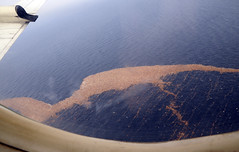 CORVALLIS – After more than two years of intense field work and digital cartography, researchers have unveiled new maps of the seafloor off Oregon that cover more than half of the state’s territorial waters – a collaborative project that will provide new data for scientists, marine spatial planners, and the fishing industry.
CORVALLIS – After more than two years of intense field work and digital cartography, researchers have unveiled new maps of the seafloor off Oregon that cover more than half of the state’s territorial waters – a collaborative project that will provide new data for scientists, marine spatial planners, and the fishing industry.
The most immediate benefit will be improved tsunami inundation modeling for the Oregon coast, according to Chris Goldfinger, director of the Active Tectonics and Seafloor Mapping Laboratory at Oregon State University, who led much of the field work.
“Understanding the nature of Oregon’s Territorial Sea is critical to sustaining sport and commercial fisheries, coastal tourism, the future of wave energy, and a range of other ocean-derived ecosystem services valued by Oregonians,” Goldfinger said. “The most immediate focus, though, is the threat posed by a major tsunami.
“Knowing what lies beneath the surface of coastal waters will allow much more accurate predictions of how a tsunami will propagate as it comes ashore,” he added. “We’ve also found and mapped a number of unknown reefs and other new features we’re just starting to investigate, now that the processing work is done.”
The mapping project was a collaborative effort of the National Oceanic and Atmospheric Administration, OSU’s College of Earth, Ocean, and Atmospheric Sciences, David Evans and Associations, and Fugro. It was funded by NOAA and the Oregon Department of State Lands.
The primary mapping platform was the vessel Pacific Storm, operated by the OSU Marine Mammal Institute. Oregon-based fishing vessels taking part in Oregon Sea Grant’s Scientist and Fisherman Exchange program – the F/V Michelle Ann, the F/V Delma Ann, and the F/V Miss Linda – assisted with ground truth sampling and video surveys.
- Read the complete news release from OSU News & Research communications
- News coverage from Sustainable Business Oregon
- Active Tectonics and Seafloor Mapping Laboratory, OSU







